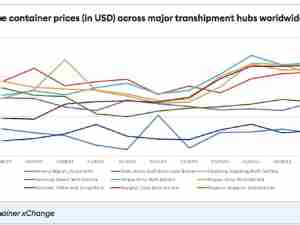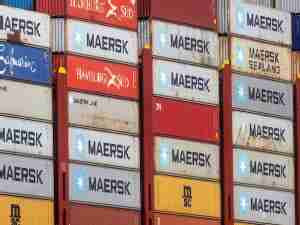Project cargo again dominates Seaway traffic
posted by AJOT | Oct 14 2015 at 10:24 AM | Maritime
With three months left in the shipping season, U.S. ports were busy moving project cargo in September.
Washington, D.C. - “Cargo shipments into the Great Lakes St. Lawrence Seaway System remained solid during the month of September,” said Betty Sutton, Administrator for the Saint Lawrence Seaway Development Corporation. “September was the second busiest month on record this navigation season with ocean going vessels arriving at U.S. Great Lakes ports with increased tonnage of project cargo, dry bulk commodities and general cargo. Aluminum shipments to auto manufacturing states of Michigan, Ohio and New York were once again on the rise as were containerized goods arriving on the Cleveland Europe Express liner service. Many of the ships that arrived with high value cargo departed the Seaway System with wheat and soybeans bound for Canada, Europe, Central America, North Africa and Scandinavia.”
At the Port of Indiana-Burns Harbor, the bulk carrier HHL Nile delivered a shipment of 16 beer fermentation tanks for Lagunitas Brewery in Chicago in September. "The Great Lakes-St. Lawrence Seaway allows companies to ship large tanks and project cargos right into the heart of the Midwest, which greatly reduces the cost and complications of trying to move dimensional cargo across the country by land,” said Port Director Rick Heimann. “This was the second delivery for Lagunitas this season following the 29 beer tanks the port handled for the brewery last year. With the popularity of craft breweries, more beer tanks are being shipped bringing the port’s total so far in 2015 to 36, including 12 tanks in June for Bell’s Brewery in Michigan and four to Revolution Brewing in Chicago.”
“The Port of Cleveland continues to post strong tonnage numbers in 2015, with general cargo numbers running more than 18 percent higher than 2014,” said David Gutheil, Vice President Maritime & Logistics. “Project cargo movements continue to remain strong, thanks to new business that has moved across our docks handled by both Federal Marine Terminals and C-Port Maritime, which handles the Cleveland-Europe Express business line. In September we welcomed our first project cargo shipment from Brazil via the CEE, and we continue to receive inquiries from potential customers who now view the Port of Cleveland as a cost effective and efficient option for their containerized and non-containerized cargo.”
In September, aluminum, pig iron and project cargo shipments remained steady at the Port of Toledo. "Construction of a new gas fired electricity plant in Oregon, Ohio has led to a series of project cargo shipments through Toledo," said Joe Cappel, Vice President of Business Development for the Port Authority. "These project cargo shipments help the port stay busy and the port helps the project by providing a location where shipments can be discharged and stored in close proximity to the final destination."
Other cargoes handled by U.S. ports in September included 47,000 metric tons of ethanol shipped from thePort of Green Bay to Montreal to be used as a fuel additive. According to Dean Haen, Port Director, “There is an East Coast shortage of ethanol this year and the Port has seen a 14 percent increase in ethanol shipments to meet that demand.”
Zelko Kirincich, Executive Director of the Port of Oswego stated that, “In September the Port Authority received 19,000 metric tons of aluminum via McKeil Marine barges from Sept-Iles, Quebec for use in the automotive manufacturing sector. We are seeing another record year in aluminum shipments through the Seaway.”
The St. Lawrence Seaway reported that year-to-date total cargo shipments for the period April 2 to September 30 were 22 million metric tons, down 12 percent over the same period in 2014. U.S. grain shipments were up by 60 percent in September over last year. The dry bulk category was up by 8 percent over 2014 with potash, stone, gypsum, and pig iron in the positive column, at 32, 27, 68 and 288 percent respectively. The general cargo category was down 13 percent. Iron ore and coal remained down in September by 15 and 40 percent respectively. The liquid bulk category posted a downturn of 11 percent.









